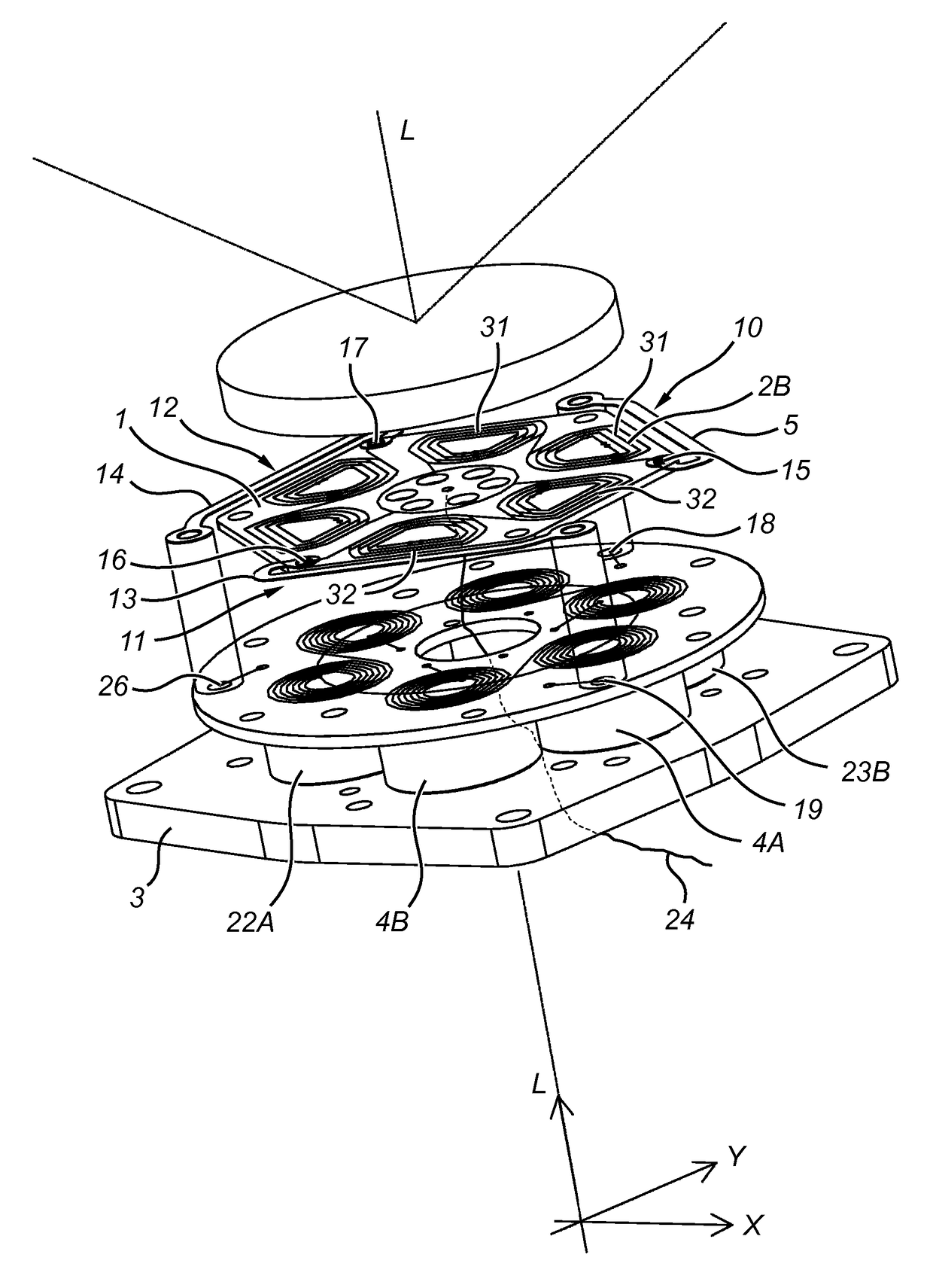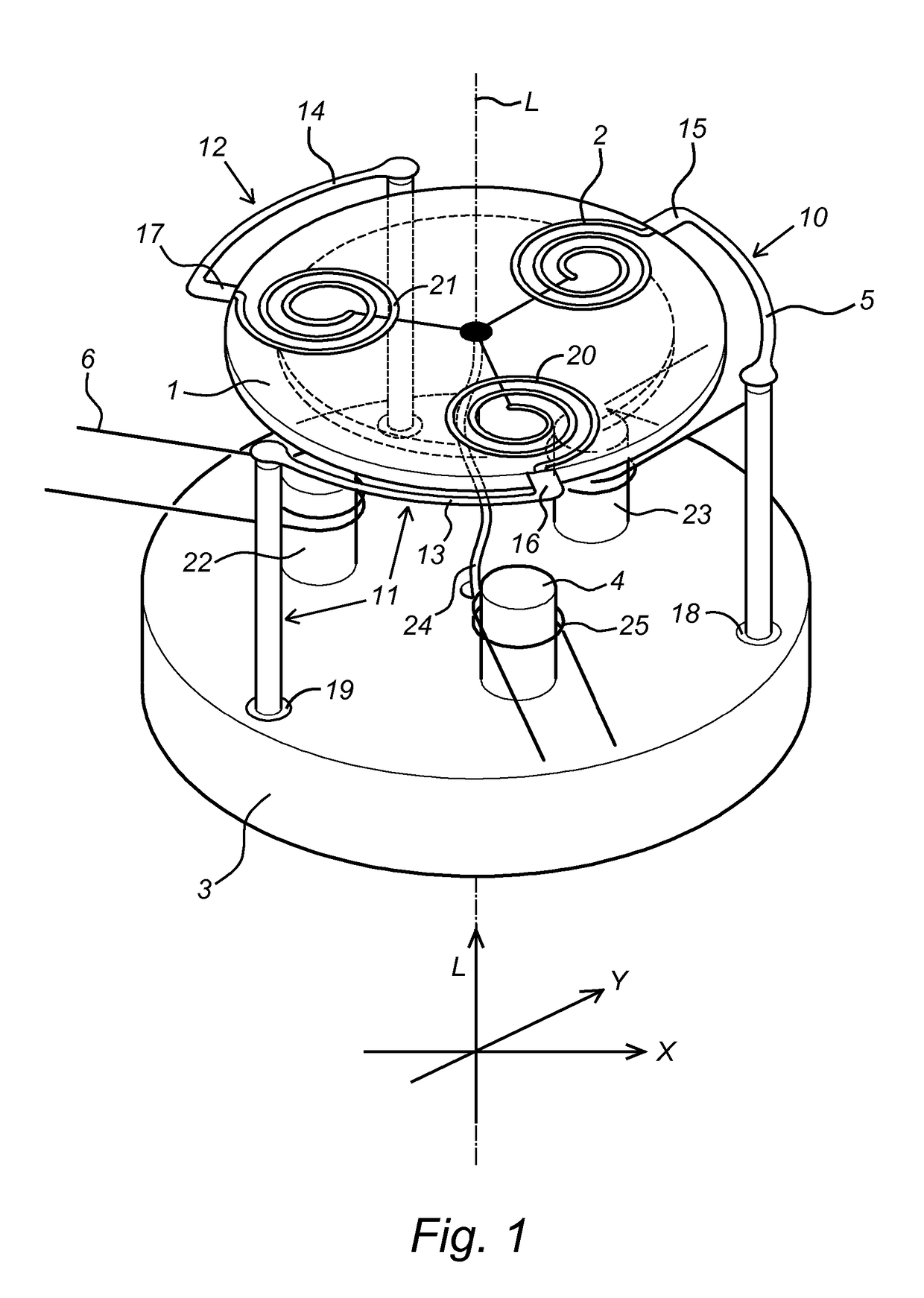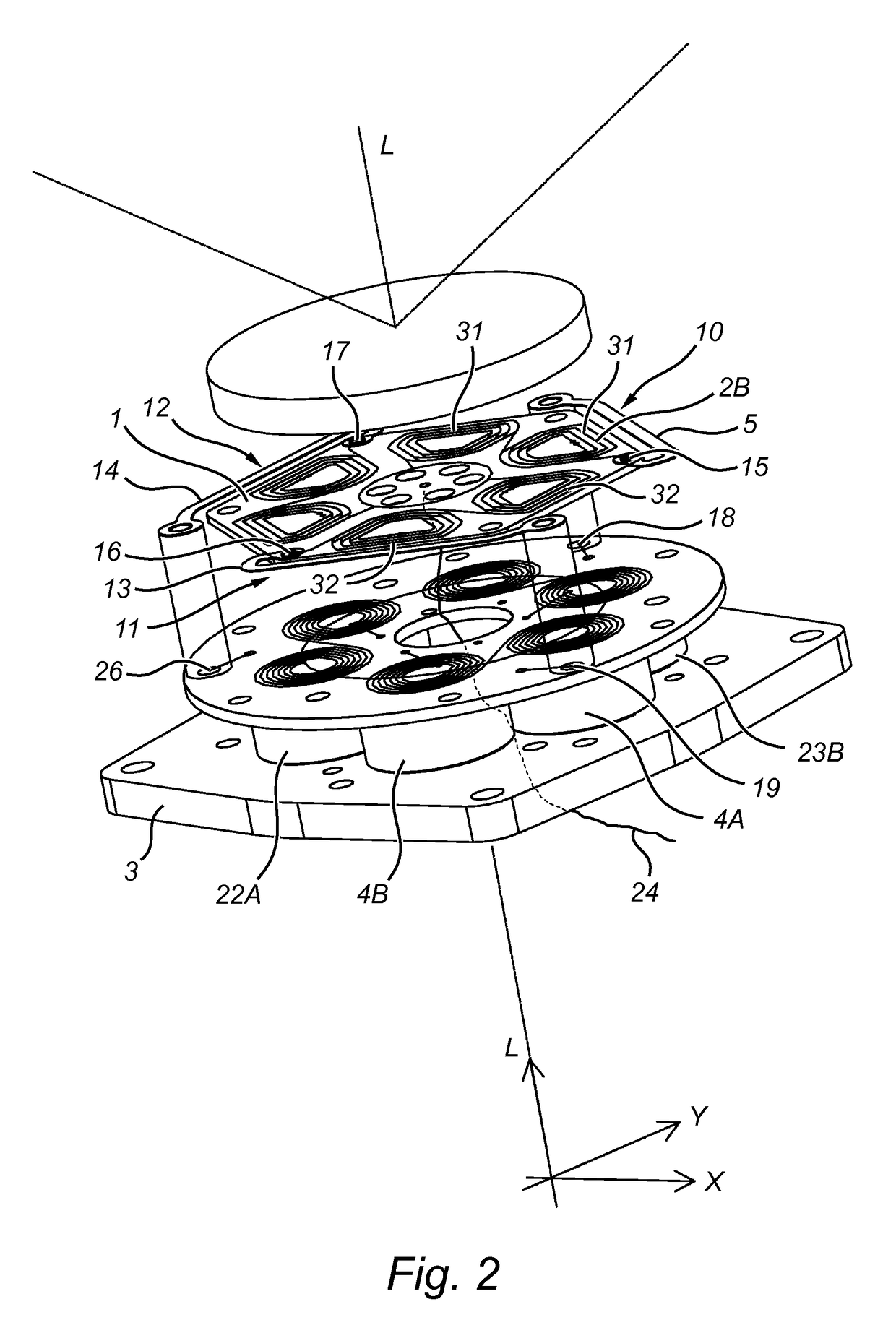Apparatus and method for positioning an optical element
a technology of positioning apparatus and optical element, which is applied in the field of positioning apparatus for optical element and methods for positioning optical element, can solve the problems of affecting the quality of optical elements, so as to achieve fast and accurate movement of optical elements and fast and accurate manipulation of light
- Summary
- Abstract
- Description
- Claims
- Application Information
AI Technical Summary
Benefits of technology
Problems solved by technology
Method used
Image
Examples
example
[0072]FIGS. 1-4 illustrate two embodiments of an apparatus according to the present invention. The apparatus comprises a positionable part (1), i.c. a positionable plate, to which an optical element, e.g. a mirror or lens, can be mounted. The positionable part can move with respect to a base part (3) which thus acts as a stator of the apparatus, as the positionable part is suspended by three suspension elements (10, 11, 12), each comprising a metallic leaf spring (5, 13, 14) which result in a flexible mechanical connection. The suspension elements are connected to the positionable part at position suspension points (15, 16, 17) and to the base part at base suspension points (18, 19, 26). The leaf springs are fitted to provide maximal rigidity in radial direction and maximal flexibility in axial direction (L) of the positionable part.
[0073]The actuation system of the apparatus of FIG. 1 comprises three actuation elements, each of which comprises an electrically conducting coil (2, 20...
PUM
 Login to View More
Login to View More Abstract
Description
Claims
Application Information
 Login to View More
Login to View More - R&D
- Intellectual Property
- Life Sciences
- Materials
- Tech Scout
- Unparalleled Data Quality
- Higher Quality Content
- 60% Fewer Hallucinations
Browse by: Latest US Patents, China's latest patents, Technical Efficacy Thesaurus, Application Domain, Technology Topic, Popular Technical Reports.
© 2025 PatSnap. All rights reserved.Legal|Privacy policy|Modern Slavery Act Transparency Statement|Sitemap|About US| Contact US: help@patsnap.com



